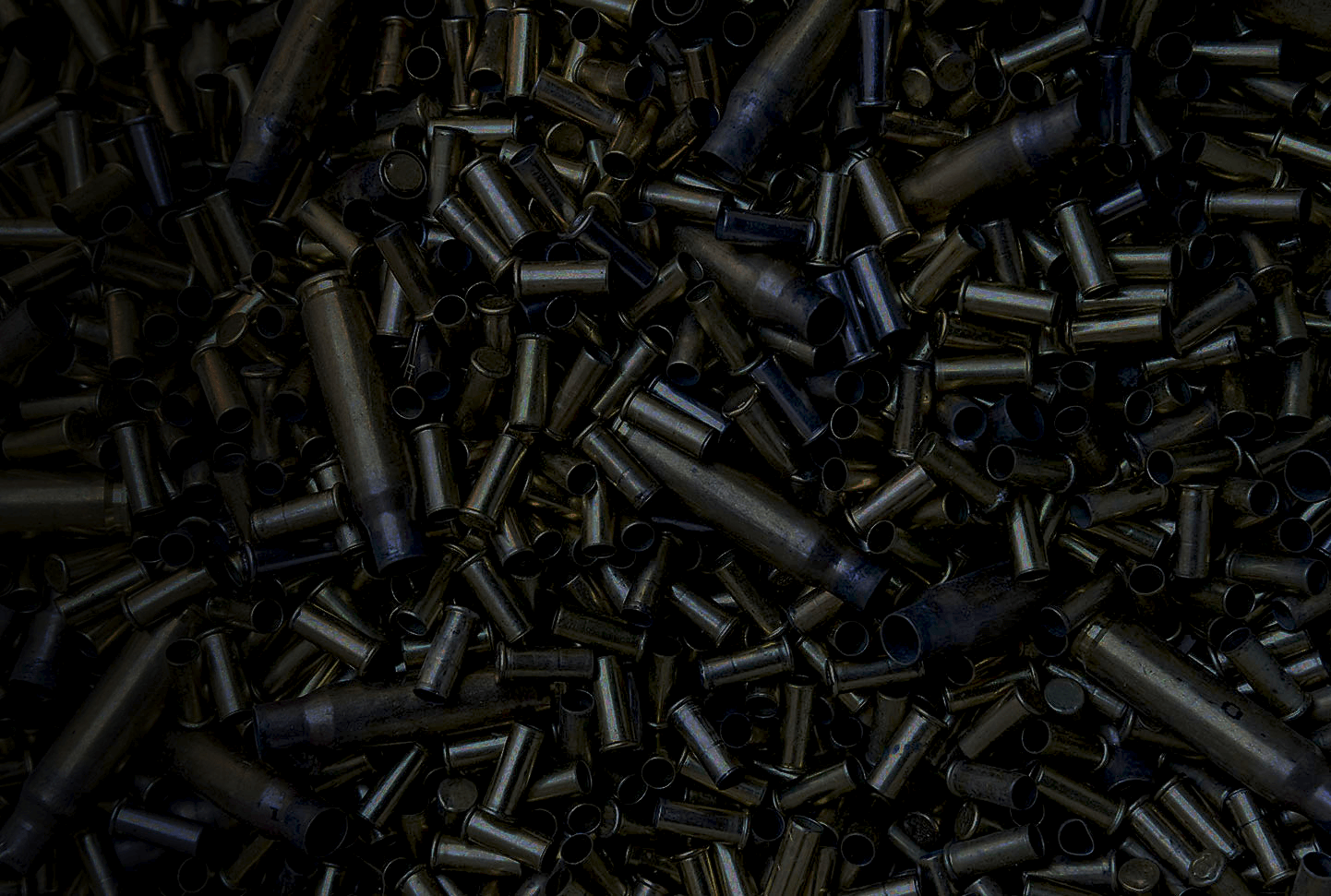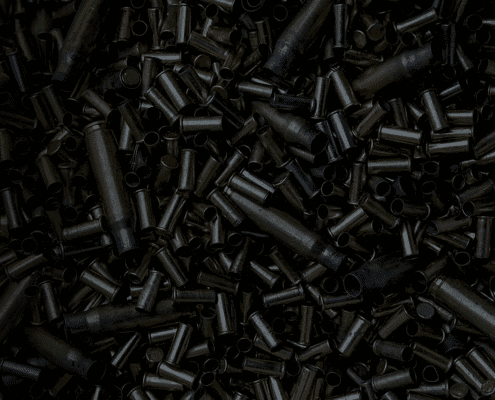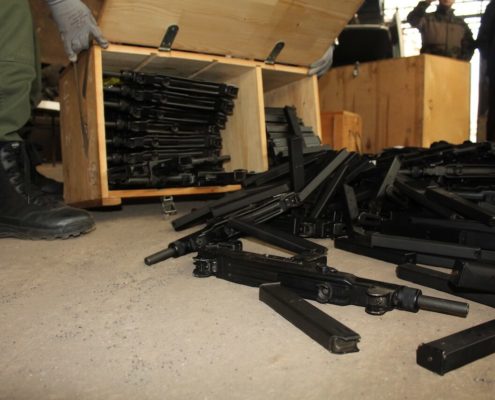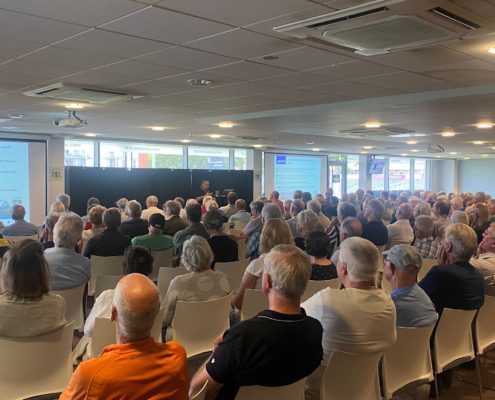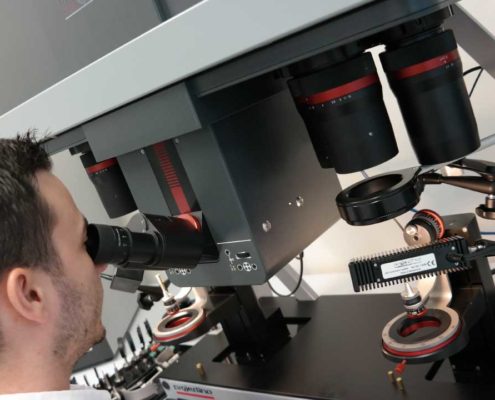 https://arquebus.uk/wp-content/uploads/2025/11/blog-cropped-v1-scaled.jpeg
1695
2560
Glenn Lawrence
https://arquebus.uk/wp-content/uploads/2022/02/Asset-1arquebus_logo.svg
Glenn Lawrence2025-11-24 09:38:142025-11-24 09:48:05Advancing Forensic Excellence in Montenegro: Ballistic Shooting Scene Incident Reconstruction Training
https://arquebus.uk/wp-content/uploads/2025/11/blog-cropped-v1-scaled.jpeg
1695
2560
Glenn Lawrence
https://arquebus.uk/wp-content/uploads/2022/02/Asset-1arquebus_logo.svg
Glenn Lawrence2025-11-24 09:38:142025-11-24 09:48:05Advancing Forensic Excellence in Montenegro: Ballistic Shooting Scene Incident Reconstruction TrainingSALW collection and destruction programmes (SCDPs) help to combat the excessive accumulation of small arms, light weapons and their ancillaries (SALW), supporting a National SALW Control Strategy (NSCS) by decreasing the amount of SALW in circulation and potentially playing a key role in post-conflict reconstruction efforts.
Arquebus is delighted to welcome David Hutchison, Weapons Marking Specialist for the HALO Trust, to share his insights on implementing successful SCDPs and how they can support a NSCS.
§
The excessive accumulation of SALW represents a significant threat to civilian populations. As durable goods, once SALW are present within a jurisdiction, there is a continuous risk that they will be subject to misuse and act as an enabler for armed violence. This is particularly the case for fragile contexts, where SALW often remain in circulation far beyond any cessation of hostilities, falling into the possession of organised criminal groups, non-state armed groups and individuals concerned for their security.
SCDPs help to combat the excessive accumulation of SALW within a jurisdiction, improving public security and safety by decreasing the total number of SALW in circulation. SCDPs might target illicit or unwanted SALW held by civilians or government-held SALW deemed surplus or unserviceable, reducing the availability of SALW which may be subject to misuse by malign individuals or groups and helping law enforcement uphold the rule of law.
Moreover, SCDPs can play an important role in preventing the recurrence of armed conflict in a jurisdiction or community. By making SALW less obtainable to potential combatants and marking a symbolic end to armed violence, SCDPs can be a valuable component of post-conflict reconstruction and peacebuilding initiatives.
A SCDP’s success is contingent on comprehensive analysis and planning prior to implementation. For SCDPs targeting civilian-held SALW, part of this process involves organising a coalition of support for programmes amongst beneficiaries, engaging with community and advocacy groups representing a variety of genders, ethnicities, and ages, to guide the design of an effective SCDP and maximise community buy-in. By drawing on the capabilities and resources of communities in possession of SALW, as well as civil society organisations and the private sector, practitioners can best ensure the sustainability of SCDPs over time.
Further to this, internationally recognised frameworks can assist jurisdictions in supporting a SCDP that successfully meets the requirements of their NSCS. Notably, the Saving Lives Entity (SALIENT) was established in 2020 as part of the UNODA’s ‘Securing our Common Future’ agenda, acting as a financing vehicle for armed violence reduction and SALW control initiatives, including SCDPs. International instruments such as the UN Programme of Action on SALW and the Global Framework for Through-life Conventional Ammunition Management also politically commit states to oversee the destruction of SALW deemed surplus, unserviceable, or obsolete.
Practitioners can also rely on sources of technical guidance and best practices to help effectively implement a SCDP in various contexts. Documents such as the Modular Small Arms Control Implementation Compendium (MOSAIC), the International Ammunition Technical Guidelines (IATGs) and the OSCE Best Practice Guide for the Destruction of SALW, contain a series of guidelines and procedures that help to plan, execute and evaluate SCDPs in a manner that meets a jurisdiction’s SALW control objectives, whilst minimising the risks to practitioners and the public.
Arquebus is delighted to welcome David Hutchison, Weapons Marking Specialist for the HALO Trust, to share his insights on implementing successful SCDPs and the role SALW collection and destruction can play in supporting a NSCS.
§
Thank you for joining us, David. Please introduce yourself to our readers and provide a brief overview of HALO’s work.
I joined the HALO Trust earlier this year. Before that, I was a firearms officer and instructor with the Metropolitan Police Specialist Firearms Command for 25 years. As a weapons marking specialist within HALO’s Weapons and Ammunition Management Directorate (WAM), my current role involves advising and delivering instructional courses on all aspects of weapons marking, registration and destruction.
The HALO Trust is the world’s oldest humanitarian mines clearance organisation. It was founded in 1988 in Afghanistan, where it still operates today. With a focus on removing the hazardous remnants of war, particularly landmines and unexploded ordnance (UXO), to make post-conflict areas safe for people to live and rebuild their lives.
Since then, HALO has expanded its operation globally and now employs over 12,000 men and women in over 30 countries where jobs and opportunities are often scarce; 98% of all HALO staff are employed locally and come from the communities that we serve.
HALO is well known for its work in landmine clearance and has recently cleared its two millionth landmine globally, but our efforts extend beyond that. In areas affected by conflict, there is often a dangerous buildup of weapons, ammunition, and explosives that remain unsecured and contribute to ongoing instability and violence. Government weapons management and ammunition storage facilities may also have suffered through conflict or lack of funding; insecurely stored weapons can be diverted, and poorly stored ammunition can pose a threat of accidental explosion, leading to further loss of life.
HALO’s weapons and ammunition management directorate tackles these issues by collaborating closely with our donors and national governments to construct new armouries and ammunition storage facilities. Our training course in weapons management, stockpile security, weapons marking, and weapons and ammunition disposal also contributes to these efforts and helps build the country’s long-term capacity to manage WAM issues independently.
By addressing these issues through WAM programs, HALO reduces the risk of explosions from poorly stored munitions and weapons being diverted from government stockpiles to criminals and terrorists, preventing future harm, reducing violence, and supporting post-conflict recovery efforts.
What are SALW collection and destruction programmes?
SALW Collection and Destruction programs are designed to safely manage and dismantle excess, obsolete, or surplus military and civilian weapons and those illegally held or collected after conflicts. These programs aim to reduce the proliferation of arms, prevent misuse by criminals or terrorist groups, and promote international security and peace. They can be managed by national governments or in collaboration with global organisations such as HALO, and the scope of these programs can vary depending on the type of weapons involved.
What are the different types of SALW collection and destruction programmes?
There are approximately twelve different types of collection programs. These include the Disarmament, Demobilisation, Rehabilitation, and Reintegration (DDRR) programs used in Sierra Leone (2002) and Liberia (2003). In these programs, combatants were offered skills training and education in exchange for handing in their weapons and the opportunity to reintegrate back into society.
Other collection programs include civilian amnesties, which were successfully used in Angola. After the civil war ended in 2002, nearly a third of the population was armed. To address this, the Angolan Disarmament Campaign was launched, starting with an intense public awareness program aimed at the voluntary surrender of weapons across the country. HALO has been involved in this program and has assisted the Angolan Government since 2005, resulting in an estimated 125,000 weapons being destroyed.
Programs like buyback initiatives are extensively used in the United States and Australia to offer money in return for weapons. Alternatively, Weapons for Development in Albania involved the United Nations building bridges and improving roads and infrastructure in exchange for the return of stolen government weapons.
In current HALO programs, we mostly encounter weapons for destruction through our SALW marking and tracing initiatives. These programs involve marking and registering government weapons stockpiles, and in the process, we identify surplus and outdated weapons and ammunition in government stockpiles and highlight them for destruction.
During a recent weapons marking and destruction course in Somalia, we found several 1938 Beretta Model 38 submachine guns. Upon researching, we traced these guns back to their issuance to Italian police units stationed in Africa before WWII. As these weapons were considered obsolete, we marked them for destruction.
What are the primary methods used for the destruction of SALW?
The most basic and practical method is to cut the weapons into small pieces; for example, the model 38 mentioned above was cut into four pieces through the stock, receiver, bolt carrier and barrel. We did this with a bench top cutter, but you can also use 9” angle grinders. When HALO was destroying weapons in Angola, the number of weapons being destroyed required a specially designed cutting machine, which, if you can imagine, was about the size of a small trailer, had a diesel engine and was towed by a truck. It was a big step up from using a bench cutter, but the volume of weapons requiring destruction warranted it.
The Australian Federal Police use shredders, while the police in Los Angeles use a car crusher to destroy the thousands of weapons they receive each month. However, we do not use such methods. Instead, we follow the guidance provided in the United Nations guide, Modular Small Arms Control Implementation Compendium (MOSAIC) 05.50. This guide offers instruction on best practices and practical application of weapons destruction.
It is important to highlight that our primary focus in today’s discussions has been on Small Arms and Light Weapons (SALW) destruction programs. However, SALW destruction cannot be discussed in isolation; we must also consider ammunition destruction. For instance, the Model 38, if securely stored in the armoury, could have remained in a safe condition for another 90 years. However, ammunition and explosives deteriorate over time and can become unstable, potentially leading to devastating consequences if they explode.
These incidents are known as unplanned explosions at munition sites (UMES) and, on average, have resulted in 718 deaths per year between 1978 and 2021. HALO, the UN international community and our donors take this very seriously. Ensuring the compliant storage and management of ammunition is a large part of the work that HALO and the WAM directorate undertake.
How would practitioners assess the feasibility and scope of a SALW collection and destruction programme?
Assessing the feasibility and scope of a program to collect and destroy Small Arms and Light Weapons (SALW) is a complex process that requires practitioners to evaluate multiple factors related to the context, goals, resources, and risks involved. In question three, we spoke at length about the different types of collection and destruction programs, so it is essential that you identify the group you are targeting.
You then have to contextualise your analysis. A weapons destruction program in a country that has suffered years of conflict will be different from a civilian weapons amnesty, where you are offering cash incentives. They share similarities in their planning, but you still have to consider many different factors.
Understanding the conflict dynamics and identifying the key actors is important, as this will help define the scope of your program and enable you to understand the potential challenges. Consider the types of weapons involved, the political will, and whether a legal framework is in place to support the project’s initiation.
Other considerations are the availability of financial, human, and technical resources. Determining the funding available for collecting, storing, and destroying weapons and the costs associated with public awareness campaigns, logistics, and post-collection is important. Developing a realistic budget is crucial, and seeking external funding or support from international organisations may be necessary.
How can practitioners effectively manage the risks associated with a SALW collection and destruction programme?
Risk and security are paramount. It’s important to ensure that you have safe collection points and contingencies in place for firearms and unexploded ordnance being handed in. I know many stories of people finding grenades, explosives, and loaded firearms in their granddad’s sheds. They then carry these dangerous items on public transportation before finally handing them in at their local police station, which then has to be evacuated and cordoned off, pending the arrival of the explosives officer.
There is also a real risk that the weapons you collect are stolen again and returned to illegal markets, so secure transport and storage must be considered. A procedure for tracking and recording weapon movement also needs to be established. Transparent and strict protocols for handling, tracking, and destroying weapons are crucial to prevent corruption and diversion.
What resources are available to jurisdictions and practitioners to help them implement a SALW collection and destruction programme?
There are plenty of resources available. As mentioned earlier, HALO uses the MOSAIC Module 05.50, which can be found on the UN website. Depending on the collection and destruction program type, you can review previous program reports and identify best practices. The UN website is the best place to go; it lists many previous programs and reports on their successes and failures.
If you are more law enforcement-focused, the Australian Federal Police implemented a weapons collection and destruction program after 35 people were killed at Port Arthur in 1996; their approach encompassed a lot of what we have spoken about today, with buyback for weapons and amnesties for gun holders.
There are also many similarities between what we discussed today, and the current UK legislation change, which prohibits zombie knives. This change in legislation includes a weapons amnesty/collection program that ran until September 23rd, 2024. This campaign used many security considerations, public awareness, and outreach strategies and can provide good guidance and a framework for future projects.
What role does SALW collection and destruction play in a NSCS?
The collection and destruction of Small Arms and Light Weapons (SALW) are crucial to a National SALW Control Strategy. They provide a comprehensive approach to improving national and regional security. By removing illicit weapons from circulation, these programs directly contribute to reducing crime, preventing the resurgence of armed groups, and enhancing public safety.
These initiatives are essential for fulfilling a state’s international obligations under arms control treaties, such as the UN Programme of Action on SALW and the Arms Trade Treaty (ATT). They also play a significant role in regional security cooperation by curbing cross-border arms trafficking.
SALW collection is particularly important in post-conflict settings, where it helps stabilise fragile regions and rebuild trust in state institutions. When combined with broader development goals, SALW collection and destruction strategies become powerful tools for providing long-term support for peace and security by breaking the cycle of violence associated with the uncontrolled spread of small arms.
§
To summarise, this blog has outlined how an effectively planned and implemented SCDP can contribute to an NSCS by combatting the excessive accumulation of SALW, improving public safety and supporting post-conflict peacebuilding efforts.
Next month’s blog post will discuss the transnational element of SALW trafficking and misuse as well as the importance of international cooperation and information exchange to an effective NSCS.
